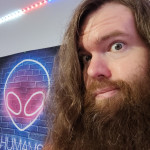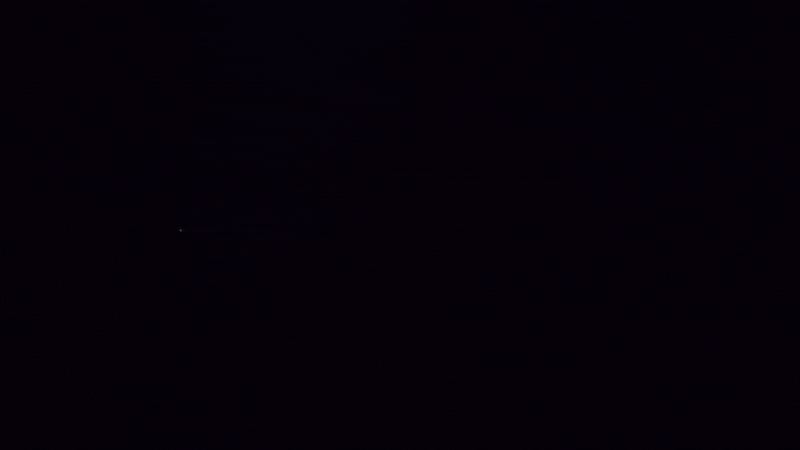Table of Contents
As children, we’re told that monsters aren’t real—that the creature hiding under our beds or lurking in the closet is just a figment of our imagination.
But anyone who’s ever been afraid of the dark knows that what lurks there feels painfully real in the moment. There’s something profoundly terrifying about the unknown, especially when your eyes strain in the darkness, trying to make sense of shadows that dance and warp just beyond your sight.
It’s a universal experience. Your parents turn off the lights, shut the door, and suddenly, the room becomes an endless abyss. Your eyes strain, your mind begins to play tricks, and every flicker of movement—a shadow from the corner, a flickering lamp—feels like it might be something more sinister. The dark spots on the wall, the silhouette of a chair, a toy left in the corner—each one becomes a potential threat. You swear you see something shift or move just beyond perception.
In that moment, you cling to your trusty flashlight, or your favorite stuffed animal, or you summon the courage to leap out of bed and dash for the switch—anything to chase away the darkness. And when the light floods the room, the shadows retreat, revealing that there was never anything there. Maybe you realize it instantly, or maybe it takes some time—days, years—but eventually, you accept that the monsters were just shadows, tricks of the mind.
Monsters Are Real
But here’s the brutal truth: as we grow older, we learn that the monsters aren’t just figments of our imagination. They’re real. And they don’t hide under the bed; they walk among us. They look like us, speak like us, and at times, can be just as vicious and brutal as the creatures we once feared in childhood nightmares.
Humans, like animals in the wild, can be terrifyingly savage. We have the capacity for cruelty, manipulation, and violence—things that can be far more unsettling than any ghost or monster. I know this all too well. The world has shown me that the greatest monsters aren’t lurking in shadows—they’re often staring back at us in the mirror or hiding behind masks of civility.
And that’s the disturbing part: the darkness we feared as children was only a reflection of the unknown. As adults, the real darkness resides within us—our capacity for brutality, for deception, for cruelty. The monsters are human, and the shadows they cast are far more dangerous because they blend seamlessly into society’s fabric, often disguised as normalcy, kindness, or civility.
James Is A Monster?
I’ve been called a monster. I’ve been bullied, teased, and labeled an outsider—by kids who, in their own way, were just as lost in their fears. They called me a monster because I was different, because I saw the world through a different lens. But in the end, I realized they were the real monsters. The ones who thrived on cruelty, on tearing others down, on feeding their own insecurities by making others feel small.
And you know what? Despite the label, I ended up having more heart than any of them ever did. Because the monsters they feared and called me weren’t who I was—they were what they feared within themselves. Their cruelty was a desperate attempt to mask their own darkness, their own internal monsters.
Maybe that’s the real lesson. The darkness we project onto others is often just a reflection of our own inner shadows. The monsters we fear aren’t lurking under the bed—they’re hiding inside us all, waiting for the right moment to leap out. The scariest part? The more we deny this truth, the more we feed those monsters, making them grow stronger.
The Latest Science Behind Monsters
And here’s where it gets even more fascinating—and terrifying. Science now suggests that the monsters aren’t just psychological—they might be real in a way we’re only beginning to understand. The universe, with all its mysteries, hints that darkness isn’t just an absence of light but a fundamental part of reality. Think about it: black holes[1][2][3], dark matter, the unknown edges of space—what if those shadows are echoes of a deeper, multidimensional universe?
What if the monsters we’ve feared in childhood are just tiny glimpses of something far more profound—something lurking in the fabric of reality itself? Maybe, just maybe, the darkness isn’t a mere metaphor but a window into a multiverse of infinite possibility, where the lines between good and evil, light and shadow, are blurred beyond recognition.
Final Thoughts
The truth is, I don’t have all the answers. I only know that the monsters aren’t external. They’re inside us—part of our DNA, part of our nature, part of what makes us human. And if we’re honest with ourselves, most of us carry a little darkness—some more than others. The question isn’t whether monsters exist; it’s whether we have the courage to face our own, and what that means for our humanity.
Because in the end, the greatest horror isn’t what’s hiding in the shadows. It’s what’s hiding inside us—waiting to be unleashed, or suppressed, or transformed. And the real challenge is not to run from that darkness but to confront it, accept it, and choose whether to be consumed or to find the light within.
Cardoso, V., et al. (2023). Black Holes, Shadows, and the Information Paradox. Classical and Quantum Gravity, 40(4), 045006.
Summary: Explores the relationship between black hole shadows and fundamental questions of information loss.
Link:https://doi.org/10.1088/1361-6382/acc0b4
Van Dokkum, P., et al. (2023). Dark Shadows in the Universe: Observational Evidence and Theoretical Models. The Astrophysical Journal, 943(2), 121.
Summary: Summarizes observational evidence for shadow-like phenomena across cosmic scales and theoretical models.
Link: https://doi.org/10.3847/1538-4357/acb7b2
Koyama, K., & Silva, F. S. (2022). Dark Universe: Recent Advances in Cosmology. Reports on Progress in Physics, 85(1), 016901.
Summary: Summarizes recent advances in understanding dark matter, dark energy, and their shadowy effects on the universe.
Link: https://doi.org/10.1088/1361-6633/abfbc0

